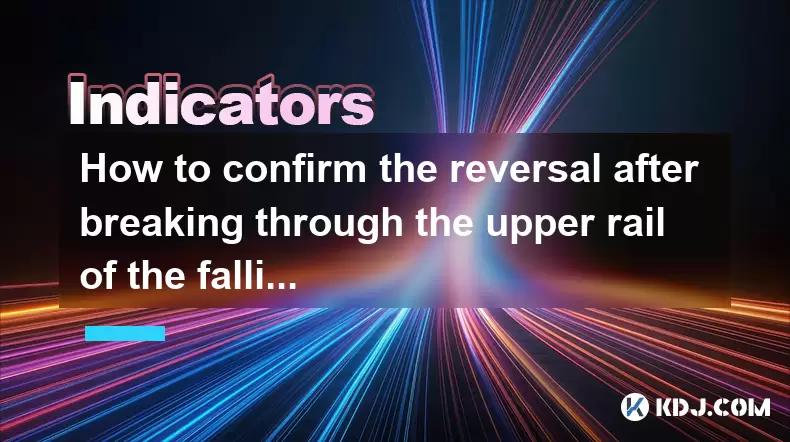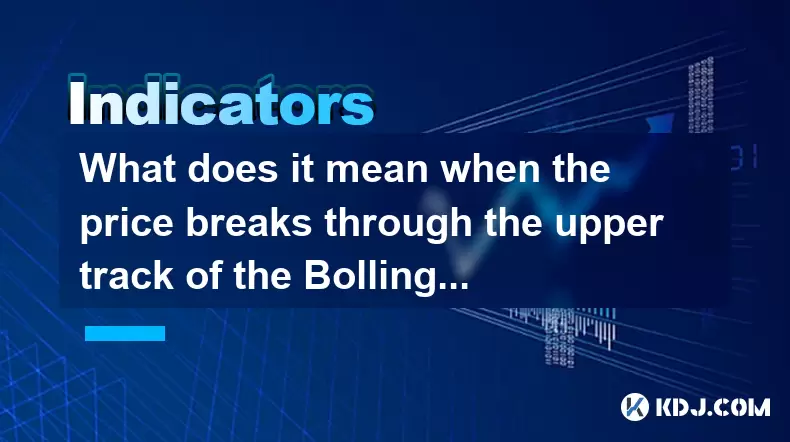-
 Bitcoin
Bitcoin $117500
-0.66% -
 Ethereum
Ethereum $3760
-1.24% -
 XRP
XRP $3.087
-2.54% -
 Tether USDt
Tether USDt $0.9999
-0.01% -
 BNB
BNB $803.6
-4.03% -
 Solana
Solana $180.3
-4.15% -
 USDC
USDC $0.9998
-0.01% -
 Dogecoin
Dogecoin $0.2218
-4.92% -
 TRON
TRON $0.3366
3.71% -
 Cardano
Cardano $0.7785
-3.73% -
 Hyperliquid
Hyperliquid $42.90
-4.75% -
 Sui
Sui $3.797
-7.45% -
 Stellar
Stellar $0.4165
-2.32% -
 Chainlink
Chainlink $17.65
-4.17% -
 Bitcoin Cash
Bitcoin Cash $561.0
-3.86% -
 Hedera
Hedera $0.2611
-4.54% -
 Avalanche
Avalanche $24.33
-7.02% -
 UNUS SED LEO
UNUS SED LEO $8.972
0.06% -
 Litecoin
Litecoin $107.6
-2.79% -
 Toncoin
Toncoin $3.254
-1.84% -
 Shiba Inu
Shiba Inu $0.00001306
-4.69% -
 Ethena USDe
Ethena USDe $1.001
0.00% -
 Uniswap
Uniswap $10.10
-4.83% -
 Polkadot
Polkadot $3.902
-4.63% -
 Monero
Monero $315.1
-2.57% -
 Dai
Dai $1.000
0.02% -
 Bitget Token
Bitget Token $4.499
-2.53% -
 Pepe
Pepe $0.00001145
-7.38% -
 Cronos
Cronos $0.1479
6.07% -
 Aave
Aave $281.3
-4.07%
How to confirm the reversal after breaking through the upper rail of the falling channel?
A breakout above a falling channel's upper rail signals potential bullish momentum, confirmed by strong candle closes, high volume, and retests, indicating a possible trend reversal.
Jun 18, 2025 at 02:28 pm

Understanding the Falling Channel and Breakout Patterns
A falling channel is a technical analysis pattern formed by two parallel downward-sloping trendlines that act as dynamic support and resistance levels. The upper rail represents resistance, while the lower rail serves as support. When price breaks above the upper rail, it signals a potential shift in momentum from bearish to bullish. However, not all breakouts result in a sustainable reversal. Traders must confirm whether this breakout is genuine or a false signal.
The first step is identifying a valid falling channel. This involves drawing two parallel lines: one connecting the swing highs and another connecting the swing lows. The more touches the price makes with these trendlines, the stronger the channel becomes as a predictive tool. A valid breakout occurs when the price closes decisively beyond the upper boundary, preferably on increased volume.
Recognizing a Genuine Breakout from a False One
One of the most critical aspects of confirming a reversal is distinguishing between a real breakout and a fakeout. Many traders get caught entering positions prematurely when the price briefly moves beyond the upper rail only to reverse back into the channel. To avoid this, traders should look for strong candlestick closures outside the channel. A close above the upper rail with a large bullish candle often indicates strength.
Volume plays a crucial role during breakouts. If the breakout occurs on high trading volume, especially compared to the average volume seen during the formation of the channel, it adds credibility to the move. Conversely, low-volume breakouts are generally considered weak and may lead to price returning inside the channel.
Another key factor is the retest of the broken resistance level. After breaking out, the price often pulls back to test the former resistance (now acting as support). If the price holds above this level and continues moving upward, it reinforces the validity of the breakout.
Using Candlestick Patterns for Confirmation
Candlestick patterns can provide additional confirmation of a reversal after a breakout. Bullish candlestick formations such as engulfing patterns, hammer candles, or morning stars near the breakout zone add confidence to the reversal. These patterns indicate that buyers have taken control and are absorbing the selling pressure.
It’s also important to observe the size and shape of the candles post-breakout. Strong, wide-bodied candles with minimal wicks suggest conviction among buyers. In contrast, small-bodied candles or those with long upper shadows might hint at hesitation or rejection at higher levels.
Traders should pay attention to the time frame they're analyzing. Higher time frames like the 4-hour or daily charts offer more reliable signals than lower ones. A breakout confirmed on a daily chart carries more weight than one observed solely on a 15-minute chart.
Applying Technical Indicators for Validation
Incorporating technical indicators can further assist in confirming a reversal. The Relative Strength Index (RSI) is particularly useful in identifying overbought or oversold conditions. If RSI is rising and crosses above the 50 level shortly after the breakout, it suggests strengthening momentum.
The Moving Average Convergence Divergence (MACD) can also be used to validate the breakout. A bullish MACD crossover following the breakout confirms the presence of buying pressure and supports the idea of a reversal.
Additionally, using moving averages like the 20-day or 50-day EMA (Exponential Moving Average) can help. If the price remains consistently above these moving averages after the breakout, it indicates a potential trend change.
Setting Up Entries and Managing Risk
Once the reversal has been confirmed, traders need to determine optimal entry points. One effective method is entering on a pullback to the broken resistance turned support. This allows for a tighter stop-loss and better risk-to-reward ratio.
Stop-loss placement should typically be just below the breakout level or the recent swing low. This ensures protection against sudden reversals or failed breakouts.
Take-profit levels can be based on the height of the channel. Measuring the vertical distance of the falling channel and projecting it upward from the breakout point gives a rough target for how far the price could travel post-reversal.
Risk management is essential. Traders should never risk more than a small percentage of their account on any single trade. Proper position sizing and adherence to stop-loss orders help preserve capital even if some trades fail.
Frequently Asked Questions
What happens if the price breaks the upper rail but immediately falls back into the channel?
This is commonly referred to as a false breakout or fakeout. It suggests that the bearish structure remains intact and that selling pressure has returned. Traders should wait for another valid breakout before considering a reversal scenario.
Can multiple breakouts occur within the same falling channel?
Yes, especially in volatile markets. However, each subsequent breakout tends to lose credibility unless accompanied by strong volume and momentum. Multiple failed attempts may signal weakening of the overall trend.
Is it possible for a falling channel to evolve into a different pattern after a breakout?
Absolutely. Once a breakout is confirmed, the falling channel may transition into a consolidation phase or form a new ascending channel. Continual monitoring and redrawing of trendlines are necessary to adapt to evolving market conditions.
How does news or macroeconomic data affect the reliability of a breakout?
Significant news events or data releases can cause erratic price movements. While these can trigger breakouts, they may not reflect true shifts in trend. Traders should assess whether the breakout aligns with broader market sentiment and technical indicators before making decisions.
Disclaimer:info@kdj.com
The information provided is not trading advice. kdj.com does not assume any responsibility for any investments made based on the information provided in this article. Cryptocurrencies are highly volatile and it is highly recommended that you invest with caution after thorough research!
If you believe that the content used on this website infringes your copyright, please contact us immediately (info@kdj.com) and we will delete it promptly.
- Bitcoin Price Drop: Navigating the Dip with Corporate Strategies
- 2025-07-30 07:30:12
- BNB's Bullish Cycle: ChatGPT Weighs In on the Future
- 2025-07-30 06:50:12
- XRP's Wild Ride: Open Interest, Price Crash Fears, and What's Next
- 2025-07-30 07:50:12
- SEC Greenlights In-Kind Creations: A Game Changer for Bitcoin ETPs?
- 2025-07-30 07:50:12
- Arbitrum (ARB) Price Prediction: Navigating the Ups and Downs of the Best ETH Eco
- 2025-07-30 06:50:12
- Ethereum, Ruvi AI, Presale: The Next Big Thing in Crypto?
- 2025-07-30 07:30:12
Related knowledge

What does it mean when the EMA combination crosses upward for the first time after sideways trading?
Jul 28,2025 at 03:43pm
Understanding the EMA and Its Role in Technical AnalysisThe Exponential Moving Average (EMA) is a widely used technical indicator in cryptocurrency tr...

What does it mean when the price breaks through the upper track of the Bollinger Band but the RSI is overbought?
Jul 30,2025 at 03:35am
Understanding Bollinger Bands and Their Upper TrackBollinger Bands are a widely used technical analysis tool developed by John Bollinger. They consist...

What signal does the ROC send when it rises rapidly from a low level and breaks through the zero axis?
Jul 27,2025 at 10:15am
Understanding the Rate of Change (ROC) IndicatorThe Rate of Change (ROC) is a momentum-based oscillator used in technical analysis to measure the perc...

What does it mean when the moving averages are glued together and a gap appears?
Jul 29,2025 at 07:49pm
Understanding Moving Averages in Cryptocurrency TradingMoving averages are among the most widely used technical indicators in the cryptocurrency tradi...

What does it mean when TEMA breaks through the long-term downward trend line?
Jul 29,2025 at 02:50pm
Understanding the Role of Smart Contracts in Decentralized Finance (DeFi)Smart contracts are self-executing agreements with the terms of the agreement...

What does it mean when the price breaks through the double bottom neckline and the moving averages are arranged in a bullish pattern?
Jul 28,2025 at 10:57am
Understanding the Double Bottom PatternThe double bottom is a widely recognized reversal chart pattern in technical analysis, particularly within the ...

What does it mean when the EMA combination crosses upward for the first time after sideways trading?
Jul 28,2025 at 03:43pm
Understanding the EMA and Its Role in Technical AnalysisThe Exponential Moving Average (EMA) is a widely used technical indicator in cryptocurrency tr...

What does it mean when the price breaks through the upper track of the Bollinger Band but the RSI is overbought?
Jul 30,2025 at 03:35am
Understanding Bollinger Bands and Their Upper TrackBollinger Bands are a widely used technical analysis tool developed by John Bollinger. They consist...

What signal does the ROC send when it rises rapidly from a low level and breaks through the zero axis?
Jul 27,2025 at 10:15am
Understanding the Rate of Change (ROC) IndicatorThe Rate of Change (ROC) is a momentum-based oscillator used in technical analysis to measure the perc...

What does it mean when the moving averages are glued together and a gap appears?
Jul 29,2025 at 07:49pm
Understanding Moving Averages in Cryptocurrency TradingMoving averages are among the most widely used technical indicators in the cryptocurrency tradi...

What does it mean when TEMA breaks through the long-term downward trend line?
Jul 29,2025 at 02:50pm
Understanding the Role of Smart Contracts in Decentralized Finance (DeFi)Smart contracts are self-executing agreements with the terms of the agreement...

What does it mean when the price breaks through the double bottom neckline and the moving averages are arranged in a bullish pattern?
Jul 28,2025 at 10:57am
Understanding the Double Bottom PatternThe double bottom is a widely recognized reversal chart pattern in technical analysis, particularly within the ...
See all articles

























































































